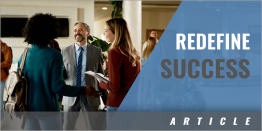|
By: Adam Sarancik Author of: Coaching Champions for Life With one out and a runner on first base, a batter hits a 3-hop ground ball to shortstop. The shortstop fields the ball, throws to second base to get the lead runner and then the second baseman relays the throw to 1B. The runner is safe at first base. From the official scorer's perspective, an error was not made, but from a coach's eye, the possibilities are many. The first step is an analysis of the preparation, anticipation, reaction and action of each player in the chain. Specifically, were the players in the proper positions per the scouting report for the hitter, pitcher, pitch and game situation? Did the fielders expect the ball to be hit to them and, based on the type and location of the pitch and the hitter's swing, did the fielders anticipate how and where it would be hit? Did the players execute their prep steps properly so their bodies and feet were in a good position to react to the ball? And finally, did the players move quickly and efficiently to get to the ball and the bag and did they use proper mechanics fielding, transferring, throwing and receiving it? When analyzing body movement, a coach must be able to do a ground up analysis of a player's posture, balance, footwork, angles (both in body and while moving) rhythm and timing without regard to the ball and glove. A coach must visually extract the ball and glove from his mind and see just the player's biomechanics at work. The solutions to these issues may be ones of physiology and athleticism that need to be solved in the gym and not by sport skill drills. These remedies need to be reinforced by a disciplined adherence to pre-game movement prep and dynamic movement routines. When addressing issues with player mechanics in fielding, transferring , throwing and receiving the ball, my experience is average coaches spend too much time teaching players how to play the game and not enough time how to properly execute the skills of the game. And when those coaches attempt to teach the skills of the game, they rely too often on auditory cues and do not use the proper scaffolding process for optimum development and results under game-like pressure. Here is the process for teaching mechanics regardless of the sport:
For example, when learning how to properly field a ground ball, the process is:
The same general, but separate process is used for teaching receiving, transferring and throwing a ball. During the off season or during pre-season, coaches must be careful not to rush through this process. Time must be taken to master each phase before moving on to the next one. How long a coach stays at one phase depends on the skill level, experience, focus and discipline of the player being coached. During the season, skill development time is limited so coaches must have an acute sense which step to begin with for each player, but the remaining steps must be completed daily so the skills will have the best chance of being transferred to the game. Most importantly, telling is not teaching; the process must be respected.
Adam Sarancik is the author of three Amazon Top 100 Best Selling books:
|








